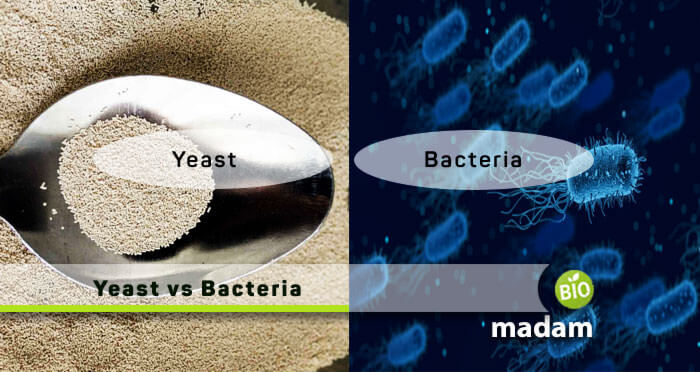Do you know? We, as large organisms, allow numerous microorganisms to share our food, air, water, and shelter with them every day. These include many bacteria, viruses, and fungi. Want to grab the difference between yeast and bacteria?
Both are living bodies where yeast is a eukaryote and bacteria is a prokaryote. All life forms are majorly classified as either prokaryotes or eukaryotes. The former falls under the earliest category of microorganisms having a single cell.
On the other hand, the latter primarily is a multicellular cell, containing all essential organelles. There are many differences between yeast and bacteria, but the chief variation lies in one being the eukaryote and the other prokaryote. Let us move further to discover more dissimilarities between the two!
Comparison Table
| Basis of Comparison | Yeast | Bacteria |
| Kingdom | Fungi | Monera |
| Type of Microorganism | Eukaryotes | Prokaryotes |
| Composition of Cell Wall | Composed of chitin | Composed of murein |
| Ribosomal Subunit | 80S Ribosome | 70S Ribosome |
| Membrane-Bounded Organelles | Present | Absent |
| Mobility | Cannot move | Can show mobility through flagella |
Explain Yeast
Yeast is a colorless microorganism that belongs to Kingdom Fungi. Despite being unicellular in nature, it is a eukaryote, having a distinct nucleus and membrane-confined organelles. One of the prominent features of this eukaryote is that it multiplies asexually by a process called budding. Yeasts show a synergistic relationship to reproduction in plants and animals. They encounter digestion by releasing their special enzymes on the organic material and absorbing its nutrients. Some yeasts are parasitic, which can cause a vaginal yeast infection, for instance, Candida albicans.
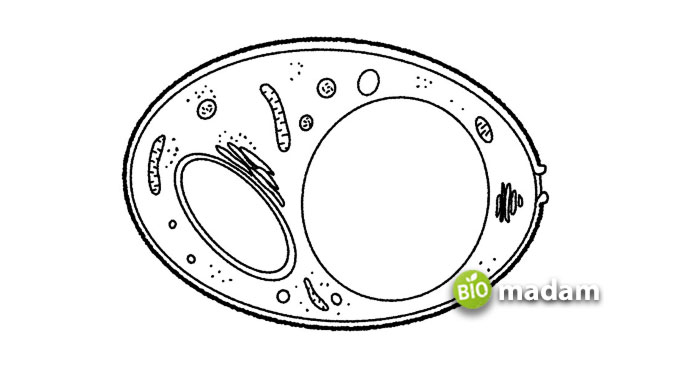
These days, yeasts are extensively used in fermentation because they can convert sugar into carbon dioxide and alcohol. There are various uses of yeast, including beer production, baking, non-alcoholic drinks, etc.
Explain Bacteria
Bacteria are considered the first living microorganisms discovered 3.5 billion years ago. They are prokaryotes that can be autotrophs or heterotrophs. It means bacteria can produce their own food through photosynthesis, and some rely on others for nutrition. They can reproduce either sexually or asexually by conjugation, binary fission, or fragmentation processes.
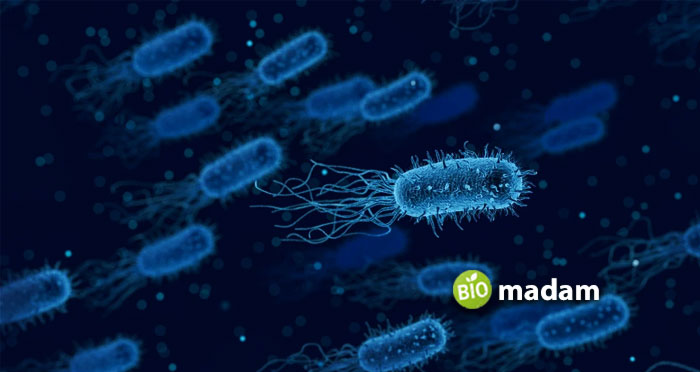
There are three shapes of bacteria, such as rod-shaped, spherical, and spiral. These unicellular micro-species have 70S ribosomal subunits and DNA material floating free in the cell. Their cell wall is made of peptidoglycan called “murein.” Some bacterial shapes have flagella, helping them in their movement.
Humans are utilizing bacteria in many industrial and pharmaceutical processes, including types of fermentation, manufacturing of vaccines, antibiotics preparations, etc. Just as beneficial, there are harmful bacteria too, which may provoke chronic infections and diseases like pneumonia, TB, cholera, and food poisoning.
Know the Similarities Between Yeast & Bacteria
There are a few key similarities seen between yeast and bacteria, such as:
Unicellular Organisms: Both microorganisms are single-celled.
Observation: Their detailed structure can be observed under a compound or electron microscope.
Polysaccharide: Both yeast and bacteria have a cell wall solely composed of polysaccharides.
Anaerobic Respiration: Both micro-entities are capable of undergoing anaerobic respiration, a type of cellular respiration.
Causes of Diseases: Despite being useful in many ways, both can be parasitic too. Therefore, they are capable of causing diseases in living organisms.
Find the Differences Between Yeast & Bacteria
Definition
Yeast
These are the unicellular microscopic organisms that fall under Kingdom Fungi and are eukaryotes. You can see them under a student microscope as well
Bacteria
These are the unicellular microorganisms that fall under Kingdom Monera and are prokaryotes.
Nucleus & Other Organelles
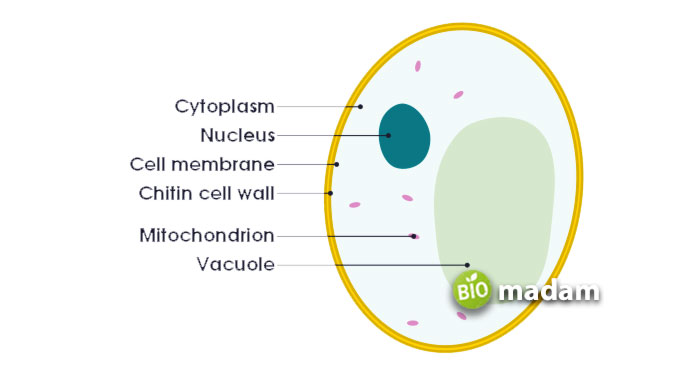
Yeast
It has a unicellular structure with a single nucleus and membrane-bounded organelles. So, the organelles include Golgi bodies, mitochondria, lysosomes, etc.
Bacteria
As bacteria are prokaryotes, so they do not have a distinct nucleus and other membrane-limited organelles.
Composition of Cell Wall
Although both organisms have a cell wall made up of polysaccharides.
Yeast
A yeast cell wall composed of polysaccharides is called chitin.
Bacteria
A bacterial cell wall composed of polysaccharides is called murein.
Structure Under a Microscope
Yeast
These are seen as distinctive cells with an oval shape.
Bacteria
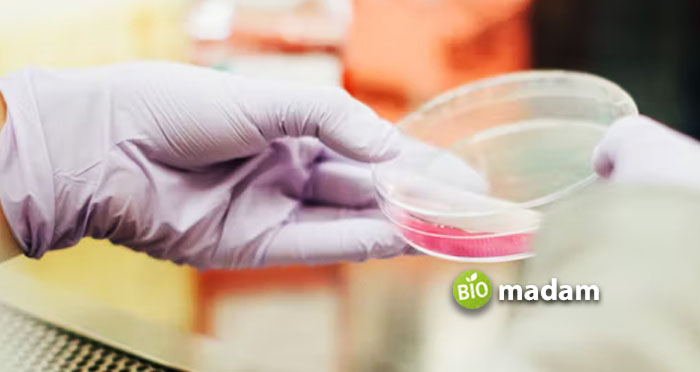
These are seen as small, spherical/rod-shaped cells that are patterned in clusters.
Reproduction
Both can reproduce either sexually or asexually, but:
Yeast
This microorganism usually replicates through budding.
Bacteria
These microorganisms replicate through binary fission and not the budding.
Survival pH Range
Yeast
An optimal pH range in which yeast can survive is 4-4.6, which is acidic.
Bacteria
An optimal pH range in which a bacterium can survive is 6.5-7, which is basic.
Diseases Caused
Yeast
This fungus can be dangerous in many ways. It can cause diseases like mycosis, candidiasis, and vaginal infections in humans.
Bacteria
There are many useful bacteria, but some cause diseases like tetanus, cholera, pneumonia, and food poisoning in humans.
Examples
Yeast
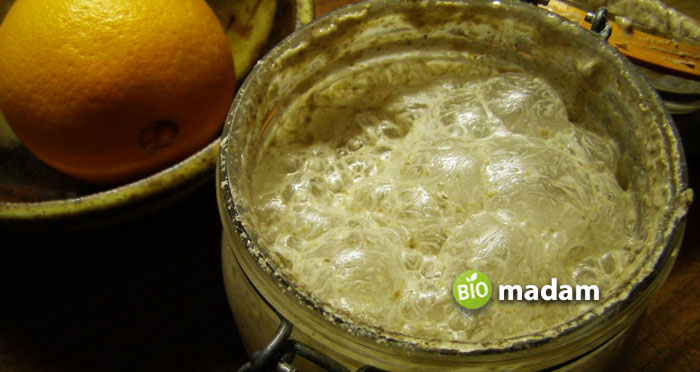
Some common examples of yeast include Candida albicans, baker’s yeast, and C. neoformans.
Bacteria
A few of many bacterial examples include Clostridium botulinum, Escherichia coli, and Lactobacillus acidophilus.
Conclusion
We hope to clear all major differences between yeast and bacteria. These unicellular living microorganisms are as essential as any other thing for humans. Science has stepped into the world where everything is intelligently utilized, and so do yeast and bacteria. Nowadays, biologists are using it in various pharmaceutical and industrial mechanisms. Bacteria are broadly found in the body as probiotics and consumed in preparing antibiotics and vaccines. Whereas, on the other side, yeast helps in fermentation. Both hold their own importance but may cause various diseases too.

Hello, I would like to introduce myself to you! I am Chelsea Rogers, an experienced blog writer for science articles, holding an MPhil degree. My enthusiasm to grab the best knowledge, let it relate to botany, zoology, or any other science branch. Read my articles & let me wait for your words s in the comment section.

